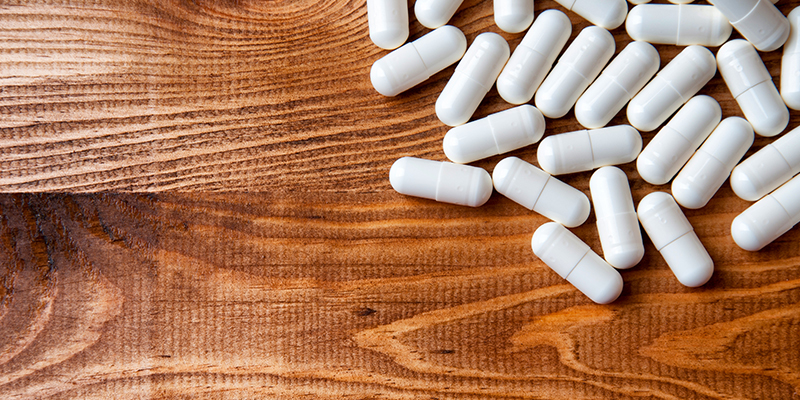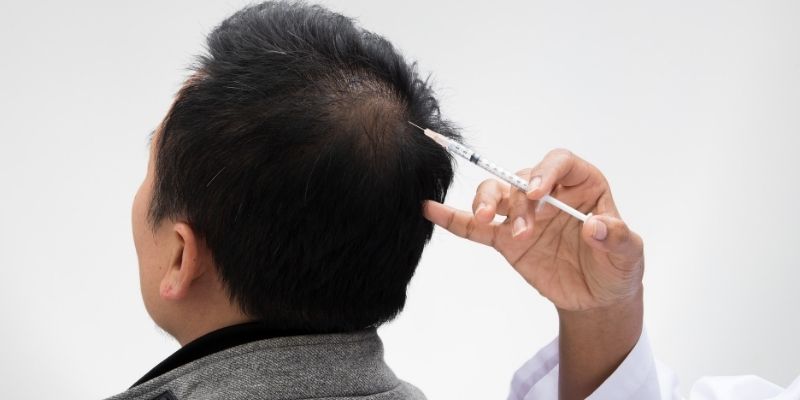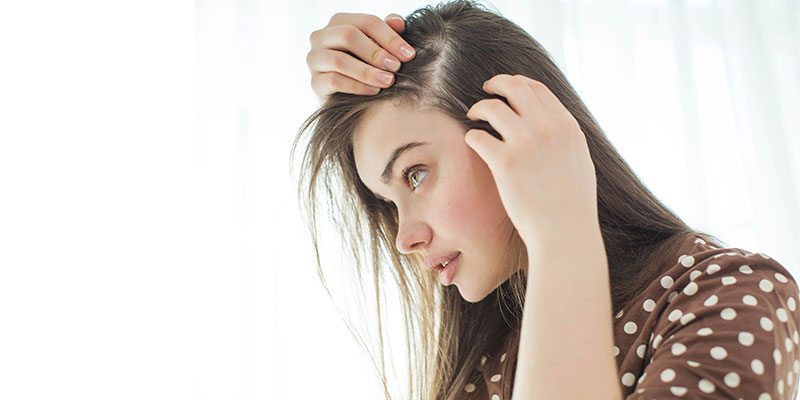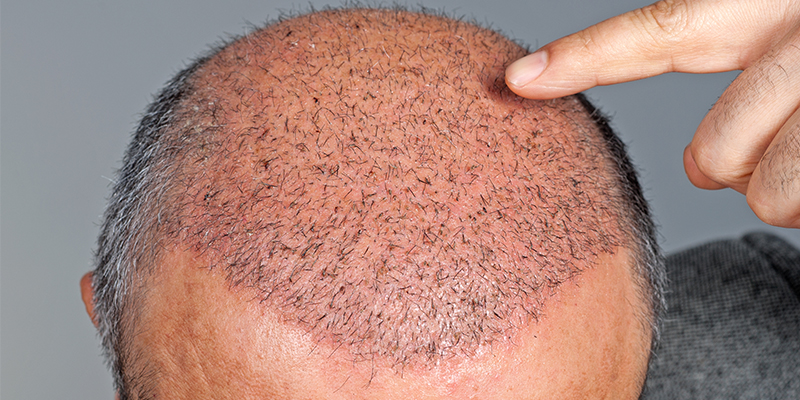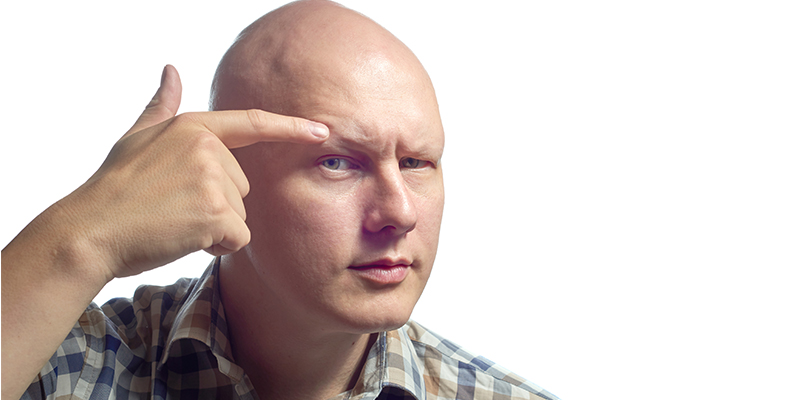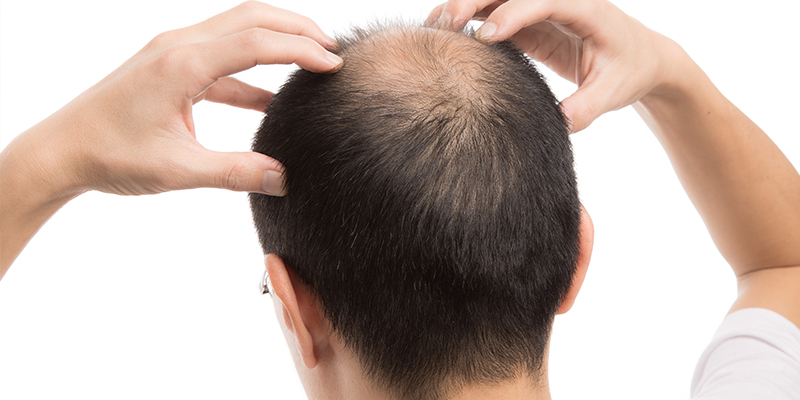Can Testosterone Cause Hair Loss?
Testosterone may not be directly related to hair loss, but indirectly it can influence hair fall. Sensitiveness of hair follicles to DHT causes hair loss. DHT or dihydrotestosterone is made from testosterone by certain enzymes called 5-alpha reductase. Both men and women can suffer from testosterone hair loss.
What Is Testosterone?
Even though testosterone is a male sex hormone, it is found in females as well. Men start producing the hormone when they hit puberty as it is associated with different male characteristics. Women also produce different androgens, including testosterone. The testosterone levels in our body affect our mood, puberty, sexual functioning, and more. Low testosterone levels can cause lack of strength, insomnia, and even depression. Both, low as well as high testosterone levels somehow results in hair loss. Therefore, an ideal amount of this hormone is needed in our body.
Different Forms Of Testosterone – There are four different types of injectable testosterone, prescribed for hormone therapy –
- Cypionate – It is a long acting testosterone that gets metabolized in around 8 days.
- Enanthate – It is an ester of a testosterone that gets metabolized in around 5 days.
- Propionate – It is a fast acting ester and within hours of administering in blood, it can peak.
- Aqueous Testosterone Suspension – It remains in the body for a few hours only and does not have any ester.
Must Read: Hair Loss Treatment
How Testosterone Affects Hair?
The hair loss due to testosterone usually happens due to the excessive amount of this active component. When DHT is accumulated on the hair follicles, it inhibits the flow of essential nutrients and proteins. At first, it results in testosterone thinning hair as the follicles are not able to get the required nutrients. In the long run, it disrupts the hair regrowth cycle. The resting phase of the cycle is increased and the new hair strands become thinner.
In the end, it leads to bald patches and the permanent loss of hair. This phenomenon is also known as DHT testosterone hair loss. Since DHT is found in females as well, it can even cause a peculiar female pattern baldness as well.
Can Low Testosterone Level Cause Hair Loss?
Low testosterone and hair loss have a connection. Mostly, it affects the thinning or loss of male hair. This includes facial and body hair loss in males. Any hormonal imbalance in our body can directly affect our hair growth cycle. Therefore, when there is a rapid fall of the free testosterone in our blood, it affects our hair growth and usually leads to baldness in front and crown region.
Watch the video now-
Some doctors recommend testosterone boosters to treat the deficiency of the hormone. Though, testosterone boosters can be addictive and might have unwanted side effects (like hair loss on the scalp).
Must Read: How To Treat Male Pattern Baldness?
Recognizing Hair Loss Caused By High Testosterone Levels
If your body has an excessive amount of testosterone, then the likelihood of DHT production also increases. To start with, you can observe the thinning of your hair strands. Also, you might see more hair growth in the rest of your body (like chest, stomach, and arms). Your scalp might become itchy due to inflammation as well.
Gradually, it develops into male or female pattern baldness. In male pattern baldness, hair loss is denser on the temple and crown region. On the other hand, in female pattern baldness, the front line remains intact while the crown region is affected the most. Therefore, you can observe the pattern of baldness and prominent symptoms to recognize the testosterone hair loss. To make sure, you can always visit a trichologist and get a thorough scalp examination.
How To Treat Hair Loss Caused By Testosterone?
Hair loss caused by testosterone can be a bit complicated. To get a long-term treatment, the level of testosterone in the body is stabilized at first. Later, a hair regrowth treatment is implemented. Ideally, a combination of these treatments is followed to treat testosterone hair loss.
- PRP Treatment – After getting a dedicated testosterone hair loss prevention treatment, hair regrowth can be achieved by PRP. It stands for platelet-rich plasma and is highly recommended for its non-invasive, safe and effective approach. Platelets are extracted from the patient and then centrifugal process is proceeded with can convert the blood into protein-rich plasma, which has certain growth factors which are excellent for tissue healing. This plasma is injected into the upper layer of our scalp (at the bald patches) to achieve hair regrowth. Since it has minimum side effects, it can heal hair loss due to testosterone.
- DHT Blockers – If DHT is the reason behind hair loss, then a blocker is mostly used to inhibit its production in the body. Medicines like Propecia can control the production of DHT by inhibiting the related enzyme (5α-reductase) growth. There are also topical medicines like gels, serums, and shampoos that can clear off DHT from the scalp. Once the DHT level has been optimized, a hair regrowth treatment is implemented.
- Hair Transplant – If the amount of hair damage on the scalp is visible, then hair transplant can be a testosterone hair loss reversible treatment. In this, hair follicles are taken from the donor area and are transplanted on the bald patches. The donor area is mostly the back or side of the scalp. Strip harvesting and FUE (Follicular Unit Extraction) are the two common hair transplant procedures.
- Scalp Reduction – Scalp reduction is another invasive approach that is used to treat aggressive hair loss. This is a surgical method in which the bald patches on the scalp are removed. Later, the nearby healthy part of the scalp is stretched and re-positioned. The end results can drastically reduce the bald patches and make the hair loss less prominent. Though, it might leave a few small scars in the end.
- Other Methods – There are tons of other treatments for testosterone hair loss as well. A dermatologist would first examine your scalp and the medical history for comprehensive diagnosis. In some cases, low as well as high amount of zinc can lead to hair loss. When an excessive amount of zinc is present in our body, it promotes the production of testosterone. The zinc testosterone hair loss can easily be prevented by getting the right medicines.
Besides that, there are also various kinds of hair nourishment treatments out there. A ketoconazole treatment can cure a fungal infection on the scalp and act as a DHT blocker. Also, a biotin treatment can nourish your scalp and boost the hair regrowth at the same time.
Must Read: What Is PRP Hair Treatment – Know Its Cost, Benefits & Results
FAQ’s
- Is Testosterone The Reason I Am Balding?
An excessive amount of testosterone in your body may sometimes result in hair loss and hair damage. It has been observed that out of all the male patients suffering from hair loss, majority have depicted hair loss due to testosterone imbalance. While it is not the only reason, it can be a major reason for hair loss. - Does Testosterone Help Hair Growth?
Since testosterone is an androgen, it can help with hair growth. Though, it leads to the growth of body and facial hair. Sadly, it doesn’t improve hair growth where we need the most – on our head. In fact, its excessive amount in our body can lead to hair loss on the scalp.
Are you tired of fighting hair loss? Visit your nearest Oliva Clinic today!






